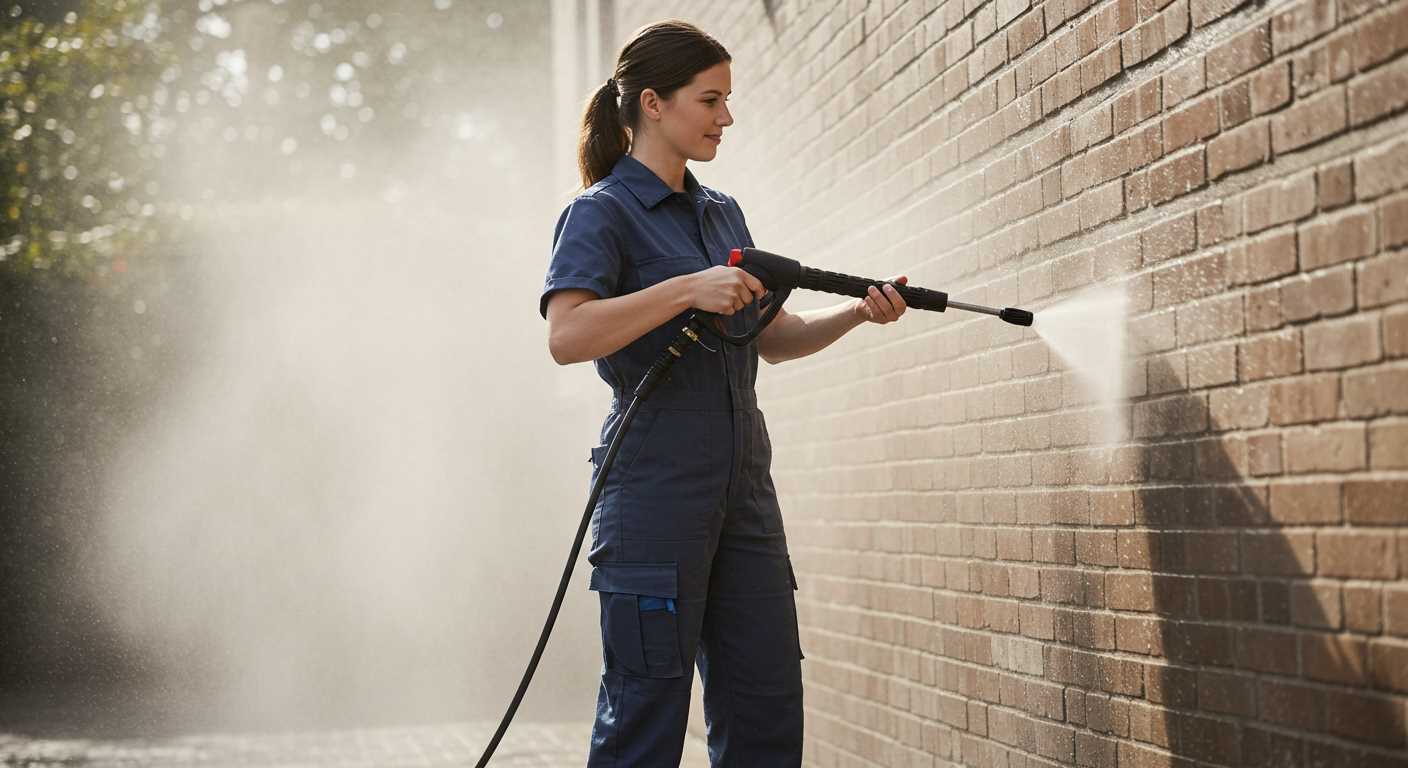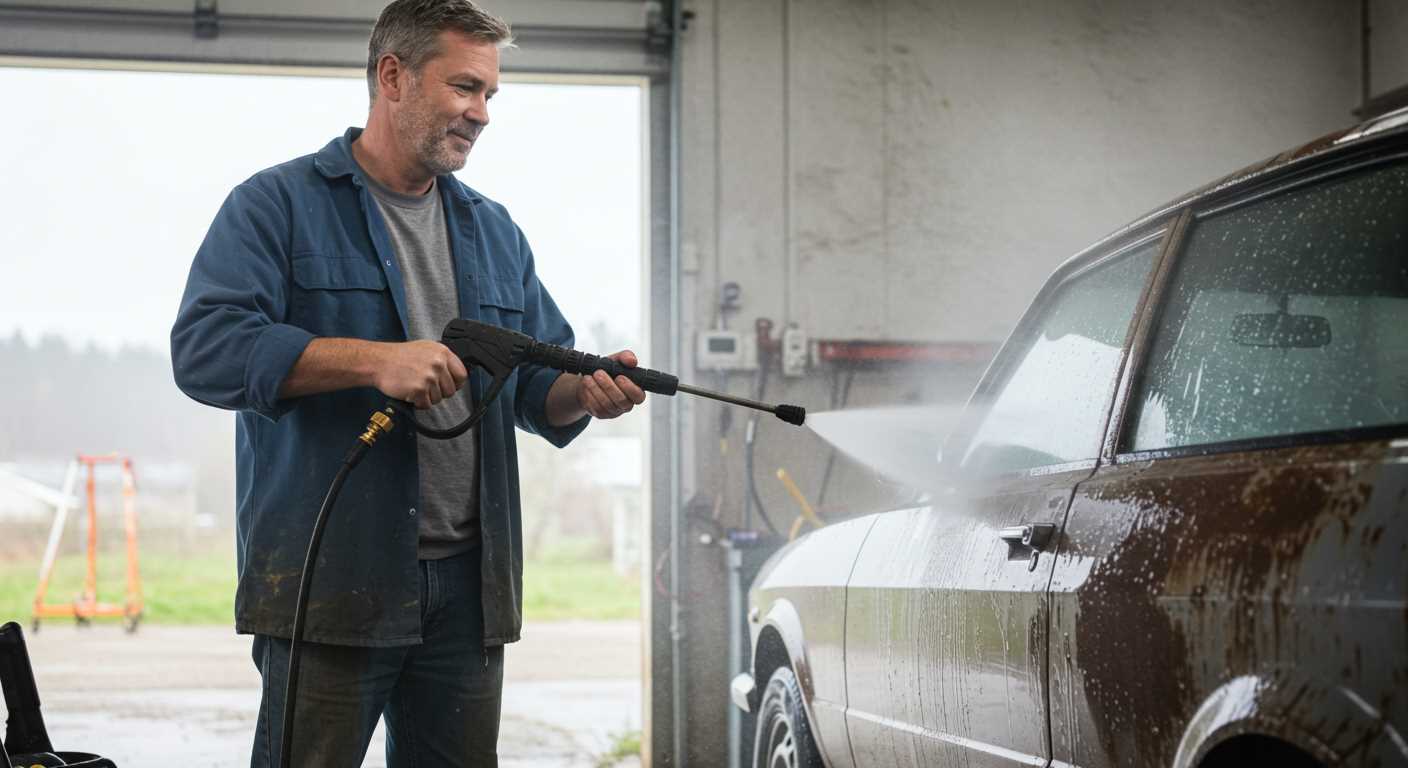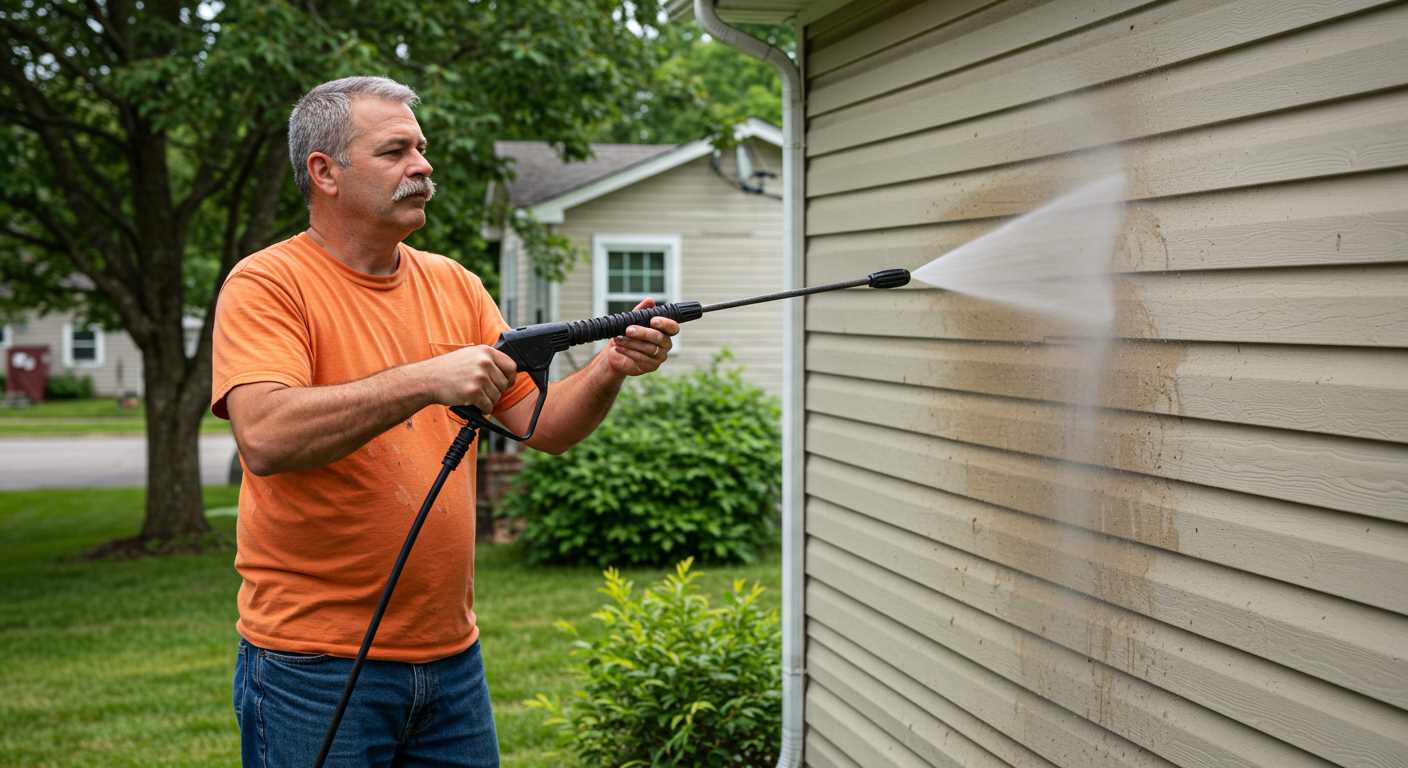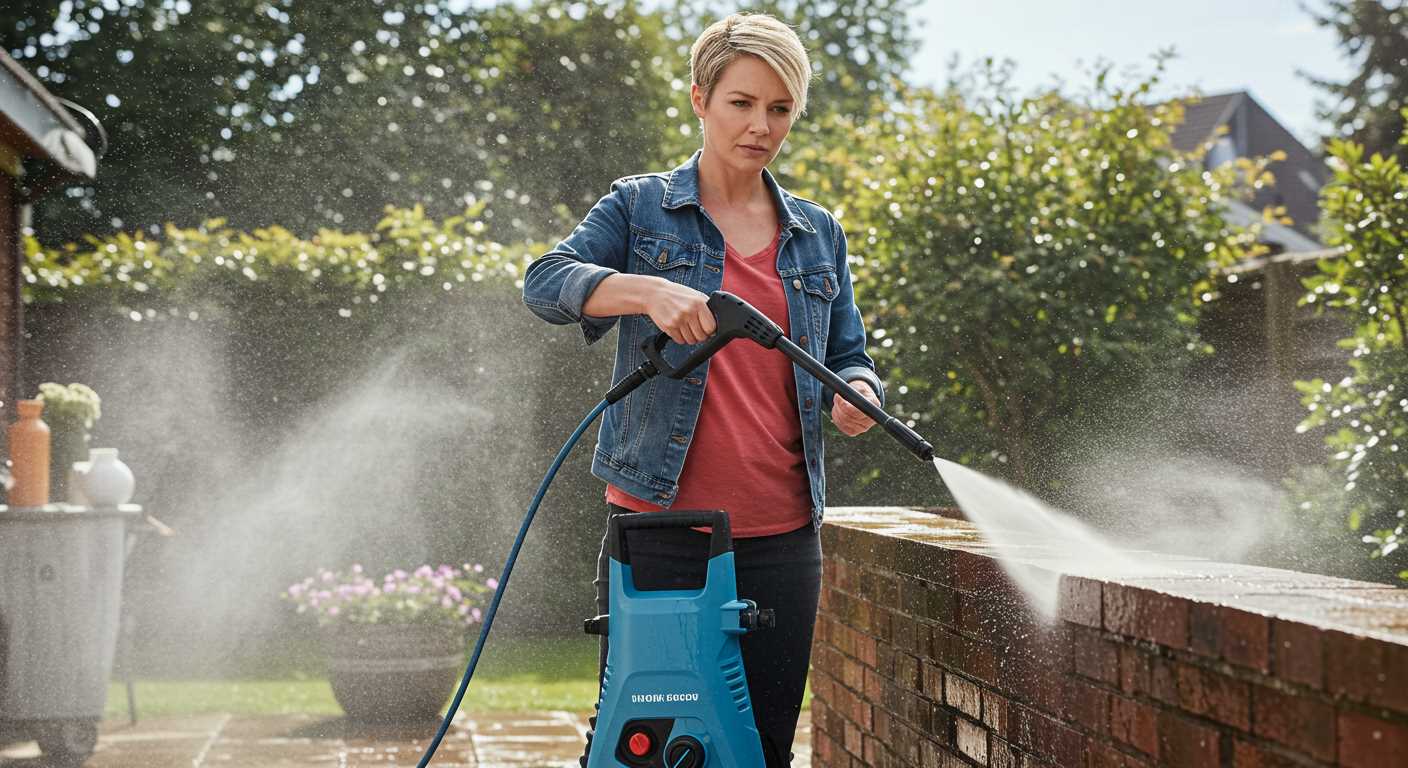Begin by checking the inlet on the cleaning device. Most units have a threaded connector designed for standard garden hoses. Select an appropriate garden hose, ensuring it is long enough for the intended cleaning area.
Next, take the garden hose and its fitting. Align the threads of the hose with those of the inlet on the machine. Hand-tighten securely, avoiding over-tightening as this may damage the threads. A rubber washer should be used to prevent leaks.
Once attached, ensure the hose is free of kinks and twists to promote smooth water flow. Before starting the cleaning task, turn on the water supply to fill the device’s system. Check for any leaks or pressure inconsistencies. A well-connected hose contributes significantly to the efficiency of the cleaning process.
How to Attach a Water Supply Line to a Cleaning Unit
Begin with the threaded end of the water supply line, ensuring it aligns with the intake port on the unit. Directly screw it onto the intake connection, ensuring a snug fit, but avoid overtightening to prevent damage.
Utilise a rubber washer within the connection to create a watertight seal. Check the washer for wear; replacing it can eliminate leaks that may disrupt operation.
Next, secure the opposite end of the line to the water source, typically a tap or faucet. Adjust the connection to ensure stability, preventing any movement that could cause leaks.
Turn on the water supply fully to check for leaks around both connecting points. If water seeps out, recheck the fittings and retighten as necessary. Ensuring a proper seal is vital for optimal performance.
Finally, activate the motor of the cleaning device as per the user manual, confirming that water flows adequately through the system without obstruction.
Identify the Pressure Washer Inlet

Locate the inlet on the device, typically situated at the rear or lower side, designed for water intake. This crucial component is often marked clearly or depicted in the user manual, ensuring ease of identification.
Examine Inlet Connections
Check for compatibility with the intended water source. Many systems feature a threaded connector, often requiring a specific fitting for a secure seal. Inspect the threading for damages or debris that could hinder a proper attachment, ensuring a watertight fit.
Verify Water Flow Direction
Observe the inlet’s orientation, confirming it allows for unimpeded water flow into the machine. Any obstructions can lead to performance issues, rendering the unit less effective. Proper alignment is fundamental for optimal operation.
Select the Appropriate Hose Type

Choosing the right tubing extension enhances performance and longevity of the cleaning unit. Opt for reinforced hoses made from materials like PVC or rubber, as these withstand high pressure and resist kinking. Ensure the diameter matches the inlet specifications of the equipment for optimal flow and efficiency.
Material Considerations
For frequent use, rubber is preferable due to its durability and flexibility. On the other hand, PVC options can be lighter and less expensive, making them suitable for occasional tasks. Inspect for compatibility with specific connectors to avoid leaks and ensure a secure fit.
Length and Pressure Ratings
The length of the tubing should correlate with the intended application; longer lengths may decrease pressure at the nozzle. Always verify the rated pressure to surpass the maximum working pressure of the equipment. This guarantees safe operation and maximises cleaning effectiveness.
Prepare the Hose for Connection
Inspect the end of the tubing. Ensure it is free from any damage or debris that might hinder a secure fit. If required, clean the threaded area with a damp cloth to eliminate any dirt buildup.
It’s advisable to examine the rubber seal within the connector. A worn or missing gasket can lead to leaks during operation. Replacing this component is crucial for maintaining optimal functionality.
If the attachment method involves a quick-connect system, ensure the clip mechanism operates smoothly. Lubricate any moving parts with a silicone spray if they appear stiff or obstructed.
Consider the length of the tubing. Confirm it is adequate for your intended tasks without causing excessive strain or kinks. A proper fit enhances performance and eases usage.
Before finalising the setup, check for compatibility with the cleaning device specifications. If doubts arise, refer to the manufacturer’s manual for guidance on specifications and fittings.
Attach the Hose to the Pressure Washer
Position the connector at the end of the supply line directly over the inlet on the cleaning unit. Align the threads before turning clockwise to secure. Apply firm pressure but avoid over-tightening, which can damage the fittings.
If the joint is leaking after attachment, check for proper alignment and ensure it is tightened sufficiently. A small amount of Teflon tape on the threads can enhance the seal, preventing leaks during operation.
Before any use, inspect the newly attached line for kinks or damage. A smooth, unobstructed pathway is crucial for optimal function. Ensure the outlet of the hose has been cleared and prepared for the water flow.
Picture the connection as a direct route; an unobstructed line allows for optimal performance and pressure delivery. Once attached, double-check that all fittings are secure and ready for the task at hand.
| Common Issues | Solutions |
|---|---|
| Leaking at the Joint | Re-align and tighten; use Teflon tape if necessary. |
| Kinks in the Line | Reposition and straighten to ensure smooth flow. |
| Low Water Pressure | Check for blockages in the line or fittings. |
After confirming that everything is in place, proceed to turn on the water supply, followed by the cleaning machine to begin the task. Regular checks during use can prevent most common issues from arising.
Check for Leaks After Connection
Inspect each joint thoroughly for any signs of dripping or moisture. It’s vital to ensure a tight seal at all connection points. If water seeps out, it indicates an improper fit. Gently tighten any fittings or couplings–be cautious not to overtighten, as this may cause damage.
Testing for Leaks
Once connections are secure, trigger the unit briefly to build pressure. Monitor the areas where fittings meet for any leaks while the equipment is operational. If leaks are detected, turn off the machine and re-evaluate the fittings for alignment and snugness.
Using a Towel
An effective technique involves using a paper towel around the connection points while testing. If water collects on the towel, it confirms the presence of a leak. This method enables quick detection before significant issues arise during use.
Ensure Correct Water Supply Setup

Prioritise the water source before setting up the cleaning machine. A steady supply of clean water is critical for optimal performance. Use the following guidelines to ensure you’ve got everything in order:
- Water Quality: Use only clean, fresh water. Contaminated water can damage components and impact operation.
- Supply Pressure: Check the water pressure at the source. Ideally, it should be between 20 to 100 psi for most units to function effectively.
- Flow Rate: Ensure the water supply offers an adequate flow rate. Most equipment requires at least 4 gallons per minute (GPM); if flow is insufficient, performance may degrade significantly.
Inspect connections before establishing the unit. Look for any kinks or blockages in the intake line that might disrupt water flow. Make certain the fittings are not damaged or worn to avoid leaks.
Utilise a filter on the water source if your equipment has specific requirements for sediment-free water. This helps prolong the lifespan of internal components and maintains functionality.
Always have a reliable garden tap or a similar source readily accessible during operation. High-capacity hoses can assist in maintaining an uninterrupted supply, especially during extensive cleaning tasks.
Prepare your area before starting any task to ensure no disruptions occur. Check the water setup and perform a quick test run to confirm that everything is functioning properly.
Disconnecting the Hose Safely

Before detaching the pipe from the unit, ensure the engine is off and the water supply is turned off. This mitigates the risk of accidental activation or water splashes.
Follow these steps for a safe disconnection:
- Release any remaining pressure in the system. To do this, squeeze the trigger on the spray gun until no more water flows.
- Carefully remove the attachment from the outlet. Most connections are designed for straightforward removal; however, avoid yanking or using excessive force to prevent damage.
- If equipped, detach any quick-release connections by pressing the release mechanism. Ensure that the couplings are dry before attempting to separate them.
- Store the removed pipe properly, coiling it neatly to prevent kinks and wear.
Regularly inspect the connection points for signs of wear or damage to avoid complications in future use. This can prolong the lifespan of all equipment involved. Following safety procedures will ensure a hassle-free experience for your cleaning tasks.







